Mapua School
Mapua - The good, the bad, and the ugly
The clean up process
During our information gathering stage we learned a lot of unexpected, unplanned information. We had to learn a little bit about chemicals, chemical reactions, good sprays and bad sprays, and the process of monitoring the safety of the clean up process.
The information on this page summarises what we understand about the need for the clean up and the process.
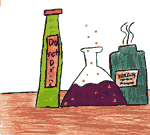

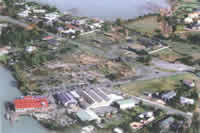
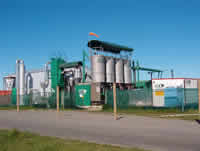
Mechano-chemical dehalogentation machine used to clean the soil.
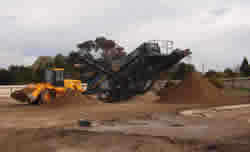
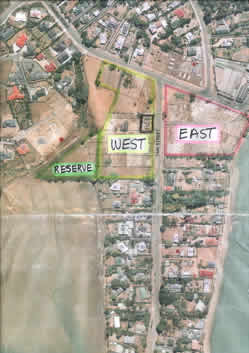
This photo was taken in 2001 and shows the areas needing to be cleaned.
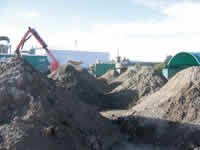
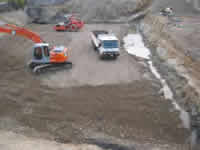

We know what to do with the area.
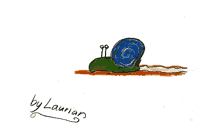
When the Fruitgrowers Chemical Company closed in 1988, the Mapua site was abandoned. We think that the process to clean the soil was too expensive for the company that owned the site at this time.
Over time they had made many sprays and products to kill pests. We learnt that they made insecticides, herbicides, fungicides and sprays that killed a combination of pests. (The suffix -cide means a killer and the first part of these names tells what they would kill.)
"Although hundreds of chemicals were made at this factory the only ones that remain in the soil at medium to high concentrations are the persistent organochlorine (OC) insecticides DDT, DDE and DDD and dieldrin and aldrin. These chemicals were withdrawn from use in the 1960s because of their toxicity and the fact that they take decades to break down in the environment."
(TDC website http://www.tdc.govt.nz/
index.php?siteBackground)
The organochlorine insecticides don't break down or dissolve in water. Instead the particles attach themselves to organic material, soil or fat in animals or fish. So they are nearly impossible to get rid of. Without the clean up the chemicals would stay in the area and build up in the animals, marine life and humans in the area. Also over time, they would be washed out to sea and affect other areas.
The local community wanted the land to be cleaned up and asked the Council to take over the land.
In July 1996, Council took over the land from the owners. The clean up did not start straight away because no one was sure what was the best way to do it. It took about seven years of research to gather enough environmental data to prove the new technology and to get some government funding for the clean up. The resource consents were obtained through a public hearing in the environment court in November 2003 and the remediation started in September 2004.
The Ministry for the Environment took over the responsibility for the remediation (clean up) for the last three years after the Australian company, Theiss, pulled out.
The project was site managed by Nelsonian John Roosen and a large team of workers. Almost the whole site has been excavated and soil moved around for treatment. We found out that 8040 cubic metres of soil was treated over 3.4 hectares of land. You can get an idea of how large this area was by the photo.
The treatment (remediation) process:
- Dig up the soil and screen out the stones.
- Sandy soil was dried and fed into a ball bearing machine where it was processed for half an hour. The chemicals stuck to the dirt so the ball bearings and the intense heat separated the two.
- The sandy soil was then put back on the site.
Jenny Easton, the person who has been responsible for monitoring the rules set down by the environment court, said it was like moving the colour tiles around on a rubric cube.
Many people are happy that this project has now been finished. Over the three years they had to put up with a lot of noise, vibrations and awful smells. There were many concerns raised about the project and the effect the airborne dust had on the people who live nearby. Mr Reade came to speak to us about the research he had done to make sure that precautions were being taken to protect people. He said there were concerns about the filters on the exhaust pipes, the extreme heats creating toxic gases and the system for monitoring airborne pollution in the neighbouring areas. The Parliamentary Commissioner for the Environment is investigating the management of the cleanup and any residual risk to locals, and a report should be out sometime soon.
The next challenge for the council and community is to decide how to best use this land. Check out the ideas we came up with by clicking the Future possibilities link below.
